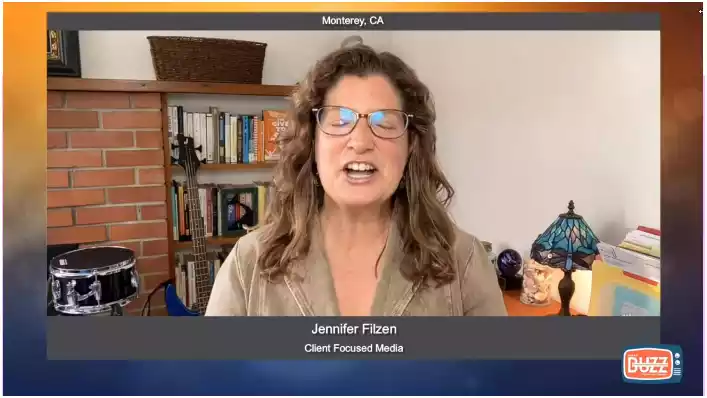Simplifying the Prior Authorization Process: Key Steps for Healthcare Providers
Discover how simplifying the prior authorization process can save time, reduce stress, and enhance patient care. Learn about innovative solutions that make healthcare more efficient and accessible. Read more to transform your approach today.

Understanding what prior authorization means for prescriptions is essential in the evolving healthcare landscape. Prior authorization for prescriptions requires healthcare providers to obtain approval from the insurance company before a medication is dispensed to ensure it is covered under the patient’s plan. This process helps control healthcare costs and ensures that prescribed drugs are necessary and appropriate for the patient’s condition. Let’s explore the benefits and challenges of this process and how it impacts patients and providers.
Let’s start!
Table of Contents
Simplifying the Prior Authorization Process

Recognizing the Significance of Prior Authorization
Prior authorization (PA) serves as a cost-saving measure for insurance companies and a quality assurance tool to verify the medical necessity of treatments. Healthcare providers need approval from a patient’s health insurance plan before administering medications, treatments, or procedures. While PA aims to protect patients and manage healthcare expenses, its complexity often poses challenges for providers and patients.
Step 1: Keep Up to Date on Payer Policies
A crucial initial step in streamlining the PA process involves staying informed about payer policies and requirements. Insurance plans have varying authorization criteria, including forms, documentation needs, and deadlines. By staying informed about these guidelines, healthcare providers can prevent delays and guarantee the accuracy and completeness of their prior authorization (PA) requests. To accomplish this goal, providers should:
- Regularly check payer websites for updates on policies.
- Participate in payer training sessions and webinars.
- Establish lines of communication with payer representatives for any clarifications or updates.
Step 2: Embrace Technology and EHR Integration
Leveraging technology can significantly simplify the PA process. Electronic health record (EHR) systems integrated with authorization functions can automate tasks, reducing manual work and minimizing errors. These systems can prompt providers with required fields, assist in attaching documentation, and enable submission directly to payers. Critical technological approaches include:
- Implementing EHR systems with PA modules and ensuring staff are proficient.
- I use authorization (ePA) systems for real-time request submissions and approvals.
- We are integrating decision support tools within EHRs to flag when PA is necessary and guide providers through the process.
Step 3: Establish Standardized Workflows
Developing workflows for the PA process can decrease variability. Ensure that all staff adhere to consistent steps when handling PA requests. This uniformity can lead to processing and fewer delays. To establish procedures, it is essential for providers to:
- Outline the process of prior authorization, from request initiation to final approval.
Recognize obstacles and pinpoint areas prone to delays. - Establish guidelines and lists for staff members to adhere to.
- Educate all personnel on the procedures to maintain uniformity in applications.
Step 4: Establishing a Dedicated Team for Prior Authorization
Having a team for handling authorizations can streamline the process and ensure that requests are managed by knowledgeable and experienced staff. This specialized approach can result in more submissions. A dedicated prior authorization team should:
- It comprises team members who are well-informed about authorization requirements and insurer policies.
- Take on the responsibility of tracking and overseeing all authorization requests.
- Serve as the point of contact for any inquiries or issues related to authorizations.
- Continuously evaluate the effectiveness and efficiency of the prior authorization process and propose enhancements when necessary.
Step 5: Upholding Comprehensive Documentation
Maintaining thorough documentation is essential for prior authorization requests. Only complete or accurate documentation is a cause of authorization denials, which can lead to delays in patient treatment. Providers should:
- Ensure all necessary documentation, such as records, laboratory results, and past treatment histories, is easily accessible and current.
- Train their staff on how to compile and submit accurate documentation.
- Utilizing electronic health record (EHR) systems to store and organize documentation facilitates easier retrieval and attachment to prior authorization requests.
Step 6: Monitoring and Assessing Prior Authorization Metrics
Providers should regularly review and analyze their authorization metrics. This method assists in identifying patterns, evaluating the effectiveness of their authorization (PA) procedures, and implementing any required improvements. Providers ought to monitor performance indicators such as:
- The duration for a PA decision to be made.
- Rates of approval and denial for PAs. Reasons for PA denials.
The impact of PAs on patient care timelines. By examining these metrics, providers can uncover areas that require enhancement and adapt their approaches accordingly.
I'm very thankful for Portiva who I know is looking after my practice while I'm gone the virtual assistants can manage prescription refills, documents they can triage patients and just kind of answer administrative questions and they can handle a lot on their own. But also, they're very good about contacting me if there's any emergency or anything I need to attend to. So I'm very thankful for Portiva they can help almost any provider almost anywhere and it really allows for some good work-life balance as I'm getting to experience right now at my family farm so I'm very thankful for Portiva and I'm very happy to use their services"

Board Certified Family Medicine Physician

Portiva's Virtual Medical Assistant - I have all the support I need. There's somebody checking my email, any patient messages. Patients are still able to schedule and handle any scheduling issues and any kind of billing that needs to still go through. Portiva hands handles it all for me. I have support i have somebody that I can access 24/7 pretty much. It's all very seamless. If somebody has an emergency or needs a medication called in. I know that the va's at portiva will handle that for me.

Board Certified Family Medicine Physician

Step 7: Foster Collaboration with Insurance Companies

- We are conducting meetings and keeping in touch with insurer representatives.
- I am participating in insurer groups or discussions.
We provide feedback to insurers regarding challenges faced and suggestions for process improvement. - You are engaging in initiatives or projects to improve the PA process.
Step 8: Empower Patients Through Education
Educating patients about the authorization procedure can help them manage their expectations and minimize frustration. When patients grasp the importance of PA and what to anticipate, they are more inclined to cooperate by sharing information. Healthcare professionals have the chance to:
- Develop resources and instruments to clarify authorization (PA) to patients.
- Discuss the PA process with patients during their appointments and address any concerns.
- Encourage patients to share information, such as previous treatment records or test results.
Step 9: Advocate for Policy Changes
By improving their PA procedures, providers can push for policy adjustments at the payer and regulatory levels to enhance the PA landscape. Getting involved in advocacy efforts can lead to changes that improve the efficiency of the PA process and lessen the burden on providers. Advocacy strategies include:
- Joining associations that advocate for enhancements in the PA process.
- I am participating in public feedback periods on proposed changes.
- We are engaging with legislators and policymakers to emphasize how PA impacts patient care and provider operations.
- We are collaborating with healthcare organizations to bolster advocacy initiatives.
Conclusion
Simplifying the authorization process is vital for healthcare providers to ensure high-quality patient care. Providers can significantly streamline the PA process by understanding payer policies, utilizing technology, establishing workflows, assigning teams, maintaining thorough documentation, monitoring performance metrics, engaging with payers, educating patients, and advocating for policy reforms. Improving these processes enhances efficiency, resulting in improved outcomes and overall satisfaction. While the PA process may not vanish entirely, taking steps to streamline it can transform it into an essential aspect of healthcare delivery.
To learn more about health insurance that can enhance your medical practice. Discover more about Portiva and unlock a world of possibilities by visiting our homepage today!
- Precertification technology and patient satisfaction
- Protecting patients with prior authorization technology
- Mitigating risks in prior authorization procedures
- Prior authorization with custom solutions
- Simplified prior authorization assistance
- Methods of risk management for prior authorization
- Why quality assurance is essential for effective prior authorization processes
- Ensuring excellence in prior authorization
- Preauthorization technology for office managers
- Prior authorization for efficient healthcare delivery
- Tailored approaches for streamlining prior authorization in healthcare
- Prior authorization process for optimal patient care
- Prior authorization support in patient care management
- Assessing the economic consequences of prior authorization
- Strategic prior authorization for better operations
- Prior authorization policies
- Prior authorization for medical treatments
- Economic trade-offs of prior authorization policies
- Navigating the prior authorization process as a patient


